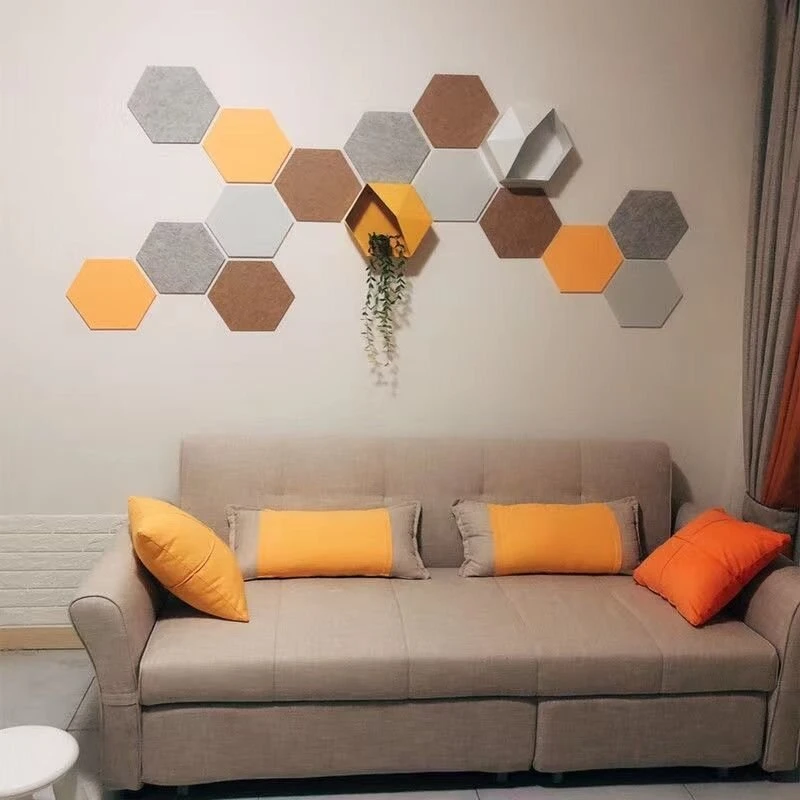Understanding PET Felt Acoustic Panels A Sustainable Solution for Sound Control
In recent years, the importance of sound control in various environments has gained significant attention. Whether in residential spaces, offices, schools, or public venues, noise levels can greatly impact comfort, productivity, and overall well-being. One innovative solution that has emerged in the acoustic treatment industry is the use of PET (Polyethylene Terephthalate) felt acoustic panels. These panels not only provide excellent noise reduction but also promote sustainability—a crucial consideration in today's eco-conscious world.
What are PET Felt Acoustic Panels?
PET felt acoustic panels are made from recycled plastic bottles, which are processed and transformed into a soft, dense material. The felt is lightweight, flexible, and available in various thicknesses and colors, making it suitable for diverse applications, from wall coverings to ceiling tiles. Their unique structure allows them to absorb sound waves, reducing reverberation and echo within a space. This characteristic is particularly beneficial in environments with hard surfaces, such as concrete or glass, which tend to exacerbate noise issues.
Sound Absorption Performance
The primary function of acoustic panels is to improve sound quality by absorbing sound rather than reflecting it. PET felt panels are designed to target specific frequencies, primarily mid to high frequencies, making them ideal for use in offices, studios, and classrooms where speech intelligibility is vital. By strategically placing these panels, one can significantly reduce unwanted noise, creating a more comfortable and productive atmosphere.
Aesthetic Versatility
pet felt acoustic panel

Beyond their functional benefits, PET felt acoustic panels offer aesthetic versatility. They come in a wide range of colors, textures, and designs, allowing them to blend seamlessly with various interior styles. Whether installed as wall art, suspended ceiling panels, or decorative room dividers, they not only enhance sound quality but also contribute to the overall design of the space. Architects and interior designers increasingly favor PET felt panels for their ability to combine form and function.
Sustainability and Eco-Friendliness
One of the standout features of PET felt acoustic panels is their sustainable nature. Made from 100% recycled materials, these panels help reduce plastic waste and contribute to a circular economy. The production process is also less resource-intensive than that of many traditional building materials, resulting in a lower carbon footprint. Moreover, PET felt panels are non-toxic and safe for indoor use, ensuring that they do not emit harmful chemicals or VOCs (volatile organic compounds) that can negatively affect indoor air quality.
Installation and Maintenance
Installing PET felt acoustic panels is a straightforward process. They can be adhered to walls using adhesive or mounted with brackets, allowing for both temporary and permanent installations. The lightweight nature of the panels simplifies handling and reduces installation time. Maintenance is minimal; a simple wipe-down with a damp cloth is often sufficient to keep the panels looking fresh and clean.
Conclusion
In summary, PET felt acoustic panels represent a sustainable and effective solution for managing sound in various environments. They provide excellent noise absorption, enhance the aesthetic appeal of a space, and support eco-friendly practices by utilizing recycled materials. As the demand for sound control continues to rise in our busy, noise-filled world, PET felt panels offer a compelling option for those seeking to improve acoustics without compromising on style or sustainability. Whether in a home, office, or public area, these panels can play a significant role in creating a more harmonious and pleasant auditory experience.
